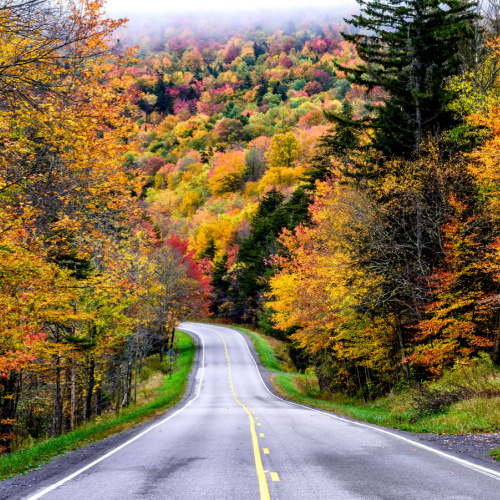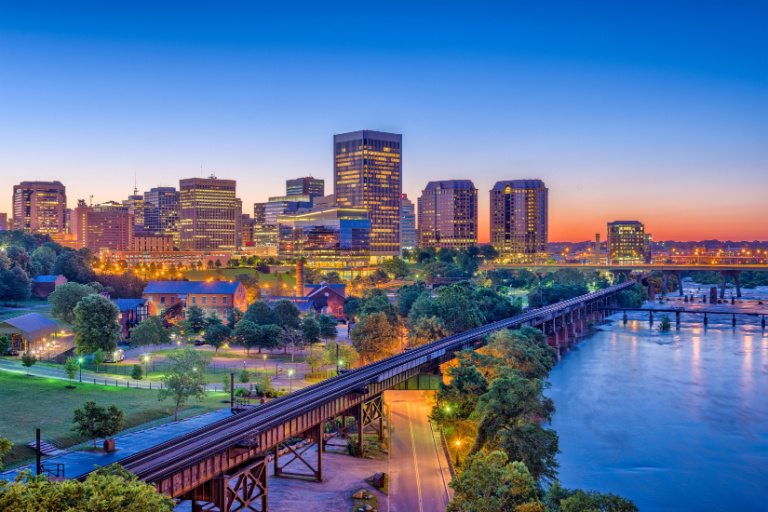
Malachi Jacobs/Shutterstock
When Is the Best Time to Visit Virginia?
The best time to visit Virginia is during the shoulder seasons of April to June and September to October. During these months, the weather is generally mild and sunny, with fewer crowds and lower prices than during the peak summer season (July and August).
Here are some of the benefits of visiting Virginia during the shoulder seasons:
- Mild weather: Virginia has a humid continental climate, with hot, humid summers and cold, snowy winters. The shoulder seasons offer pleasant temperatures, making them ideal for sightseeing, exploring, and enjoying the outdoors.
- Smaller crowds: The shoulder seasons are less crowded than the peak summer season, so you’ll be able to enjoy Virginia’s popular tourist attractions without having to deal with large crowds. This is especially important if you’re visiting popular destinations like Shenandoah National Park, Colonial Williamsburg, and Virginia Beach.
- Lower prices: Prices for flights, accommodation, and activities are generally lower during the shoulder seasons than during the peak summer season. This means you can save money on your trip without having to sacrifice quality.
Here are some specific examples of how you can enjoy the most of Virginia during the shoulder seasons:
- Spring (April to June): The weather in spring is typically sunny and mild, with occasional showers. This is a great time to visit for wildflowers in bloom, hiking in Shenandoah National Park, and visiting the many historical sites throughout the state, such as Monticello and Montpelier.
- Autumn (September to October): The weather in autumn is also typically sunny and mild, with occasional showers. This is a great time to visit for leaf peeping in the Blue Ridge Mountains, attending the many festivals that are held throughout the state, such as the Virginia State Fair and the Shenandoah Apple Blossom Festival, and visiting the many pumpkin patches and haunted houses throughout the state.
While there are many great times to visit Virginia, if you’re looking for the best weather and the most opportunities to enjoy the state’s natural beauty and attractions, then we recommend visiting during the shoulder seasons of spring and autumn.
 Average Temperatures by Month
Average Temperatures by Month
|
Jan |
Feb |
Mar |
Apr |
May |
Jun |
Jul |
Aug |
Sep |
Oct |
Nov |
Dec |
| Fahrenheit |
37°
|
39°
|
47°
|
56°
|
66°
|
75°
|
80°
|
79°
|
73°
|
62°
|
51°
|
42°
|
| Celsius |
3°
|
4°
|
8°
|
13°
|
19°
|
24°
|
27°
|
26°
|
23°
|
17°
|
11°
|
6°
|
Climate in Virginia
Summer Season in Virginia
Virginia's summer season, from June to August, offers warm and pleasant weather, with temperatures typically ranging from 75°F to 85°F. It's an ideal time for outdoor activities, exploring the state's natural beauty, and enjoying historic sites and cultural events. The warm and sunny weather is perfect for experiencing the diverse attractions of Virginia.
Rainy Season in Virginia
Virginia experiences rainfall throughout the year, with slightly more precipitation in the late spring and early autumn months. While there isn't a distinct rainy season, visitors should be prepared for occasional showers, particularly in May and September.
Winter Season in Virginia
Virginia's winter season, from December to February, is relatively mild, with temperatures ranging from 35°F to 50°F. This period is great for exploring historical sites, visiting museums, and enjoying the state's rich cultural heritage. It's a popular time for experiencing the unique blend of history, architecture, and outdoor beauty in Virginia.
Our Recommendations
| Destination |
Jan |
Feb |
Mar |
Apr |
May |
Jun |
Jul |
Aug |
Sep |
Oct |
Nov |
Dec |
| Virginia |
 |
 |
 |
 |
 |
 |
 |
 |
 |
 |
 |
 |






